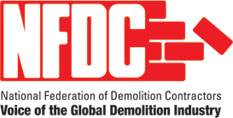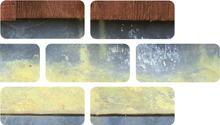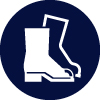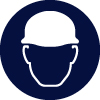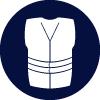
Lead Metal 17 04 03
Lead is a natural element that is a soft, ductile and malleable metal that is also considered a heavy metal which is poisonous if ingested. Lead is a bright and silvery metal that tarnishes when in contact with air, giving it a grey-blue appearance. It is a high value commodity when compared to some other metals. Lead is fashioned into various products of varying quality and finish to suit functional and architectural purposes. This DRIDS does not include lead batteries.
Usage & Probable Locations
Lead in building construction is generally functional and used in various styles and sizes of water pipes, roof sheets, roof flashings, gutters, tank linings, downpipes and both architectural and ornamental features. It is also used in ironmongery, sanitary ware, fixtures, fittings and garden features. It is mostly found in plumbing, on roofs and in gardens.
Personal Protective Equipment
PPE requirements indicated are for guidance purposes only. DRIDS has identified the PPE that is mandatory on all demolition projects and ones that may be required subject to site specific Risk Assessment & Method Statement (RAMS). Hover over the icon to determine the types of PPE required for the removal of this material.
Removal, Segregation & Storage
Lead that is destined for reuse should be deconstructed, segregated and stored carefully and safely, to ensure its integrity and good condition. Roofing products and ornamental features should be stored flat or in bundles to prevent warping. They should also be stored away from plant movements to prevent damage. Lead destined for recycling need less attention to detail and should be segregated into a separate metal recycling skip. There is little need to store lead inside a building or under cover as they are robust.
Tools
Fixtures, Fittings & Connections
Lead pipes, flashings, roofing sheet, downpipes and gutters have been traditionally fixed in place with brackets, screws and lead strips. Roof flashings, gutter joints, downpipe collars and tank linings may be sealed with solder, bitumen, putty or mastic. Lead tiles are mostly nailed or lead-wedged in place. Lead roof sheets are usually moulded into place, tacked lightly and the joints soldered or crimped. Lead water pipes, gutters, downpipes, roof tiles and roof sheets are rarely painted as they are robust and resistant to weather.
Health & Safety
Subject to task-specific Risk Assessment & Method Statement (RAMS). Use correct protective equipment for removing screws, nuts and brackets. Wear gloves at all times when handling lead products to prevent irritation, cuts and metal splinters. Do not smoke or touch mouth until hands have been thoroughly washed. Wear eye protection when using hand tools. Do not walk on wet tiles or roof sheets. Only use harness protection at height as a last resort. Only use soldering or cutting tools if properly trained.
